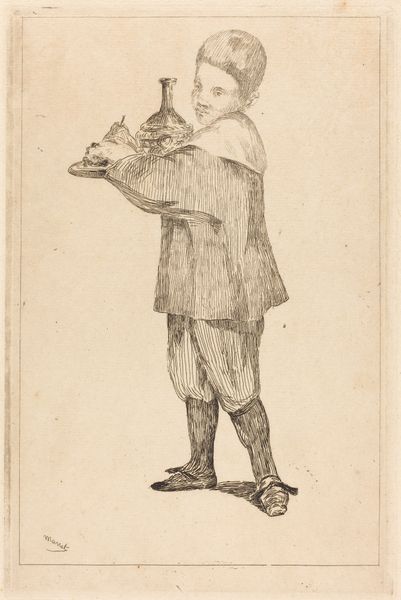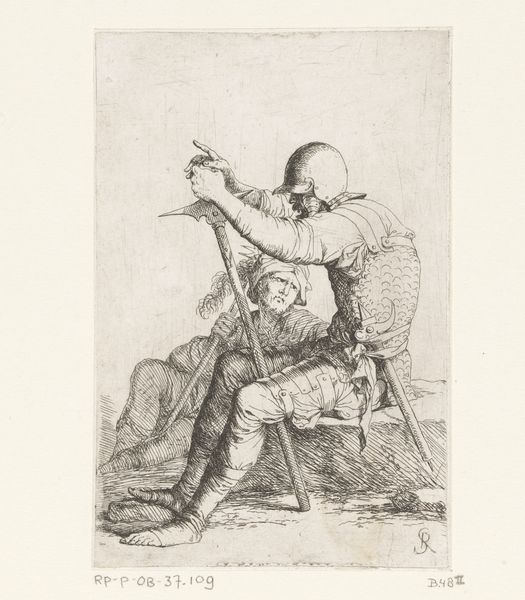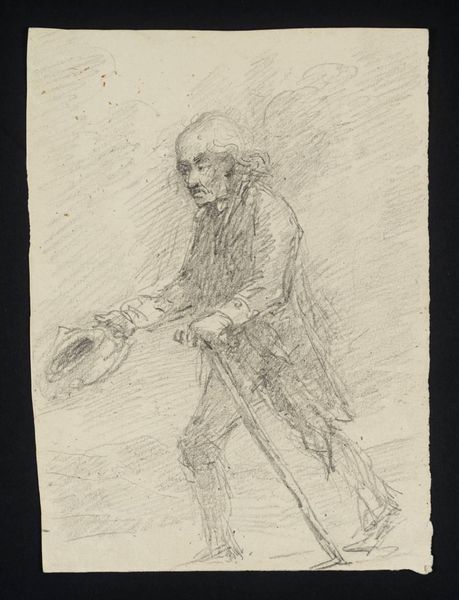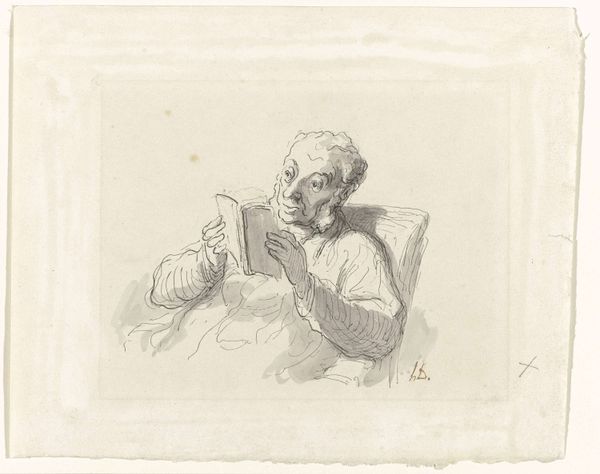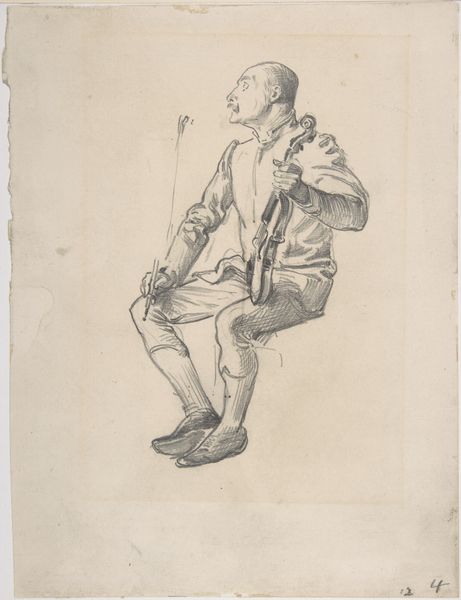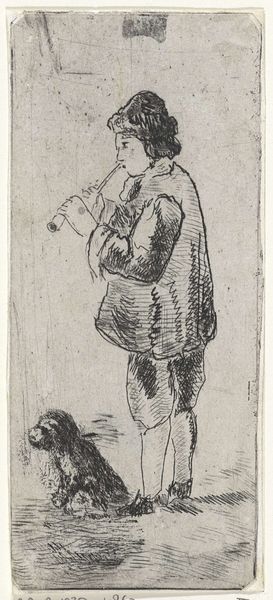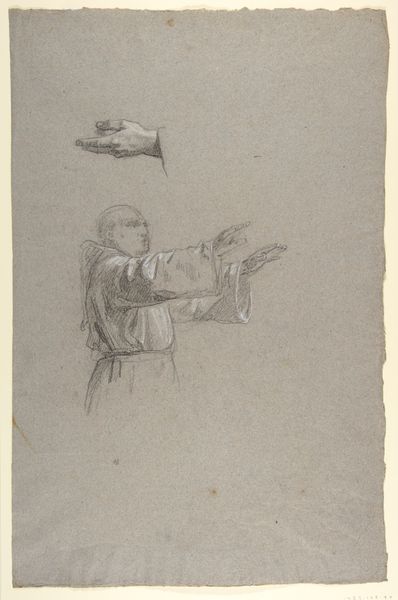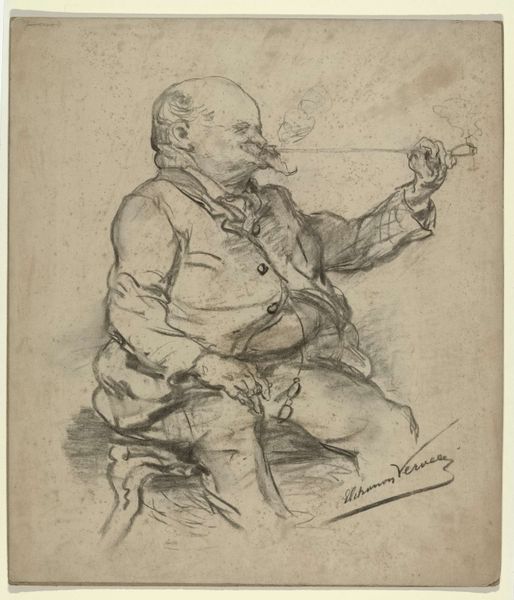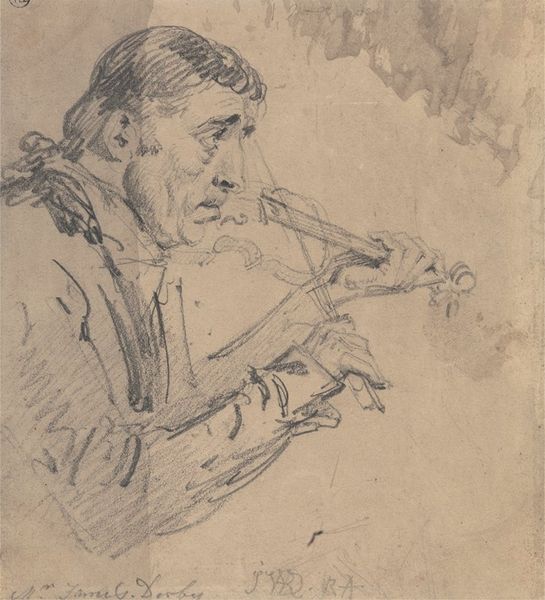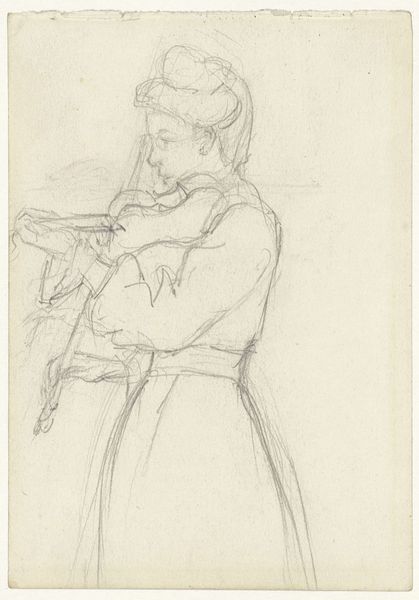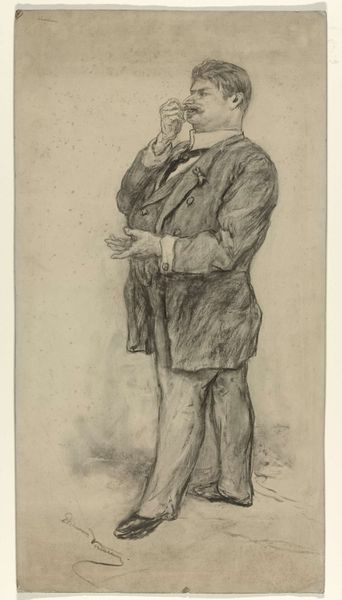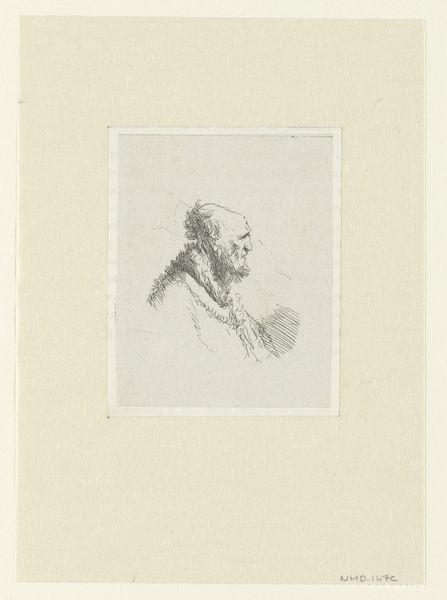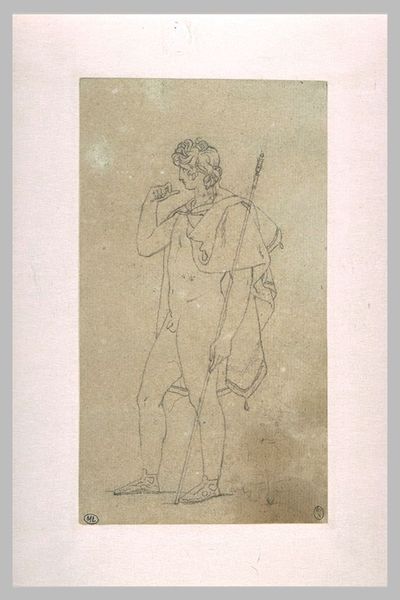
Dimensions: height 157 mm, width 128 mm
Copyright: Rijks Museum: Open Domain
Editor: This drawing, "Portret van de hoornist Pelting," dating from 1756-1817 by Louis Bernard Coclers, is striking in its simplicity. It appears to be graphite and pen on paper. There’s a real focus on line. How would you interpret this work, looking at its formal qualities? Curator: Indeed. Immediately, the linear quality dominates. The almost skeletal framework of the horn contrasts sharply with the denser cross-hatching that defines the face and wig. Notice how Coclers uses varying densities of line to create tonal shifts. The texture of the paper also interacts to influence the final image. Have you considered the implied lines here? Editor: Implied lines? I hadn't thought of that. Are you referring to how the gaze leads us around the piece? Curator: Precisely. The figure's gaze and the horn's directional lines create an energetic dynamism. This is further emphasized through how the lines don’t settle into any large mass but form separate geometric plains, each interacting with its adjacent shapes in carefully chosen contrasts of tones. Editor: So it is the way these shapes balance and contrast that create meaning? I can see the distinction of the planes more clearly now and understand how they build the overall visual narrative. Curator: It is about understanding those structures as integral to deciphering the artistic intentions. Consider too how Baroque compositional techniques like diagonal emphasis find expression in line through this medium, lending it its power and beauty. Editor: Seeing your perspective on the lines has changed my entire impression of the portrait. Now I see dynamism instead of simplicity. Curator: And that, in essence, is the function of semiotic study.
Comments
No comments
Be the first to comment and join the conversation on the ultimate creative platform.
